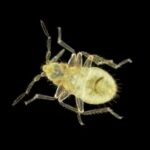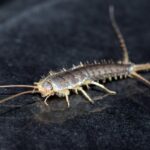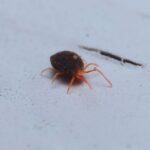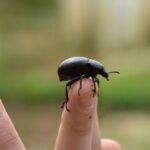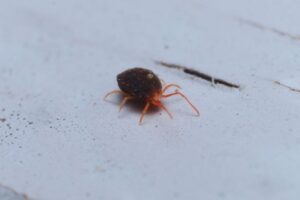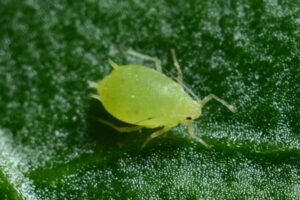Have you been awakened in the middle of the night by small bugs crawling over your bed and leaving you with itchy rashes? Tiny bugs in bed (not bed bugs) – what are they?
Those tiny bugs are not bed bugs. Here are ten small bugs that people often confuse as bed bugs:
- Swallow bug
- Flea
- Cockroach nymph
- Carpet beetle
- Tick
- Bat bug
- Spider beetle
- Book lice
- Head lice
- Mites
It is easy to confuse these tiny bugs with bed bugs because you will also find them in your bed. Their small sizes also make them appear like bed bugs, but they are not. Bed bugs are different because they suck blood from their victims and can’t fly. Most of these other bugs do not suck blood and some fly.
Read on to learn more about small bugs that are not bed bugs and their descriptions.
Tiny Bugs in Bed
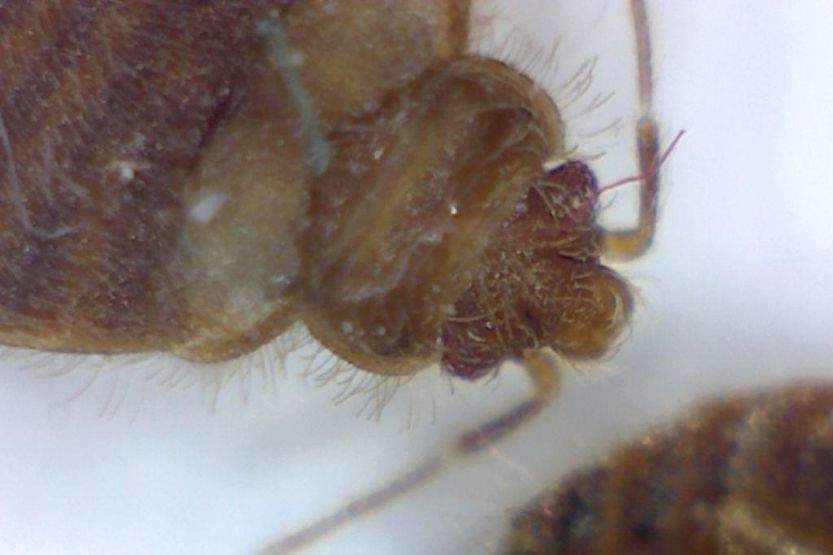
When people see tiny bugs in their beds, they often assume that they are bed bugs. But there are small bugs that are not bed bugs just because you find them in beds.
Here are some tiny bugs in bed that are not bed bugs:
- Swallow bug
- Flea
- Cockroach nymph
- Carpet beetle
- Tick
- Bat bug
- Spider beetle
- Book lice
- Head lice
- Mites
Other Bugs Can Live on the Bed
Just because you can find them in your bed does not make these insects bed bugs. While bed bugs are the most common insect infesting beds, other bugs can also live on your bed. Bed bugs live mostly on blood they extract from humans and small pets and animals. They can infest beds and chairs in offices, schools, buses, jeeps and cars, hotels, and homes.
People Cannot Differentiate Bed Bugs from Other Tiny Bugs
You are not just the one confused about them. A study made by a research team from the University of Kentucky found that about two-thirds of Americans could not correctly differentiate bed bugs from other tiny bugs they found in their beds.
Common Insects and Their Sizes
The reason is partly because of their small and similar sizes. Look at the information below, and you will see why it is not easy to differentiate these bugs from each other. It’s because of their tiny sizes.
From biggest to the smallest, the sizes of these bugs don’t differ so much. Here are their sizes:
- Mosquitos – 0.4 inch
- Bed bugs – 0.3 inch
- Cockroaches – 0.25 inch
- Bat bugs – 0.23 inch
- Swallow bugs – 0.18 inch
- Ticks – 0.12 inch
- Spider beetles – 0.10 inch
- Lice – 0.09 inch
- Booklice – 0.06 inch
- Fleas – 0.05 inch
If you make a cursory study of these bugs, you will know certain things about these tiny bugs in bed that look like bed bugs but are not. What are these small bugs, and what do they look like?
Swallow Bugs
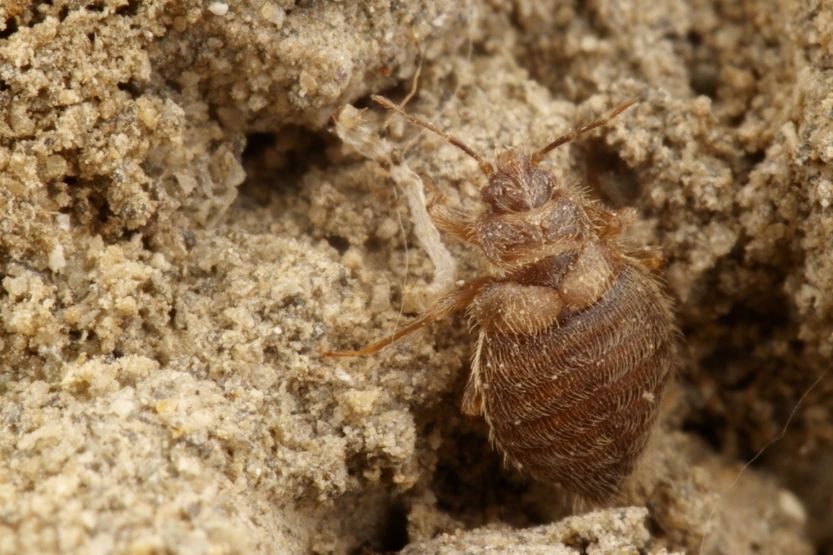
Similar Appearance to Bed Bugs
Swallow bugs look similar to bed bugs. They have almost the same color and are very similar in size, although bed bugs are slightly bigger. So, you can’t differentiate them by their size alone. However, you can know if it is a swallow bug if the insect is covered in long hairs.
Feed on Birds
They like to feed on birds, particularly the swallow. That’s why they are called that name. If they can’t find their hosts, they will invade homes and offices and feed on human blood and the blood of small pets and animals.
Breed Through the Summer
These small bugs breed through the summer and on to early fall. That’s when swallows migrate to warmer zone areas. If swallow bugs bit you by chance, you could have minor to severe reactions on your skin. These bugs can live long. Some are known to survive three years even without food.
Fleas
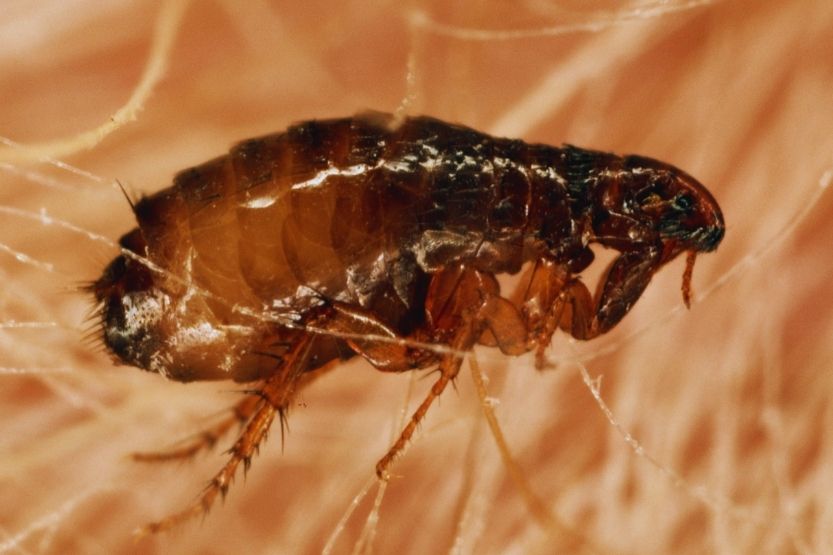
Reddish-brown in Color
Most fleas have a reddish-brown color, just like the color of bed bugs. But they are a bit smaller, and their bodies are more oval than round. Fleas are skinnier than bugs, and they can jump. They tend to stand taller than bed bugs and are more vertical to surfaces.
Infest Cats and Dogs
Fleas also feed on blood, but they prefer animal blood more than human blood. So, they usually infest cats and dogs. If you see tiny bugs infesting the sleeping quarters of your small pets, more likely, they are fleas. You may also see them on your carpets, more than you can see them on your bed.
Cockroach Nymphs

Upon hatching, the body color of cockroach nymphs is white. However, they will soon turn reddish-brown, just like the color of bed bugs. Their bodies are more cylindrical compared to red bugs, which are round.
Cockroach nymphs feed mainly on decaying matter, not blood. They will eat anything that decays to survive. That can include spoiled foods, including:
- Fruit,
- Bread,
- Fish, and
- Old clothes, paper, and old shoes.
Carpet Beetles
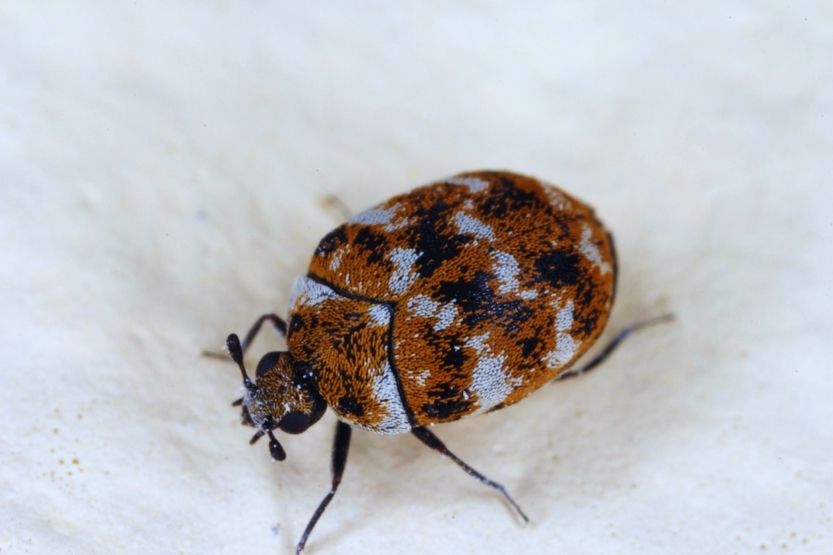
Small and Round
Carpet beetles, like bed bugs, are small and round. But they are a bit smaller, and their colors can vary. Some of them have yellow, white, and black patterns on their bodies. One major thing that makes carpet beetles different from bed bugs is their wings.
Live on Nectar and Pollen
These tiny insects live on nectar and pollen. If their main source of food is scarce, they can feed on dead skins of bed bugs. So, that’s the reason why people get confused about them. However, they don’t bite humans. But their prickly hairs can cause skin rashes if you get exposed to them.
Ticks
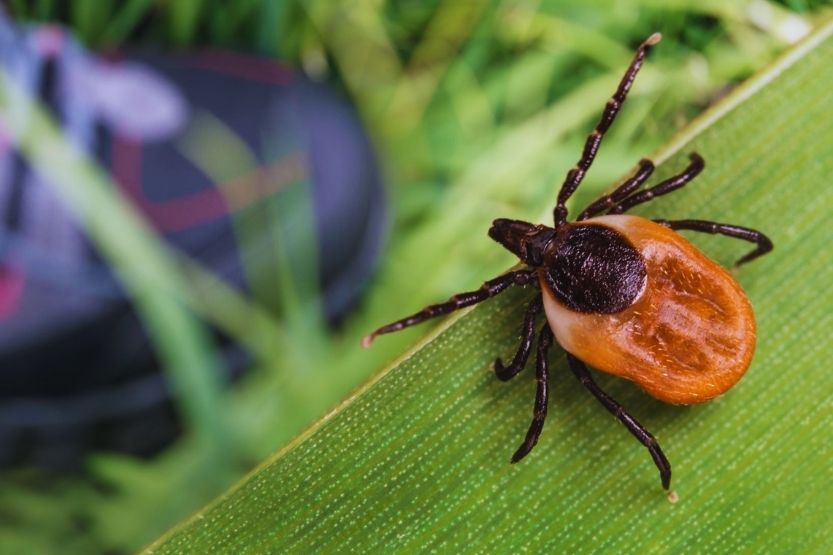
Come in a Different Range of Brownish Colors
Ticks can come in a different range of brownish colors. Most of them, however, have a brown color. Their bodies are flatter before they feed, which causes people to confuse them with bed bugs. But they also have a round body shape. They are primarily different from bed bugs because of their eight legs. Bed bugs only have six legs.
Prefer Animal Blood
Ticks also live on blood. But they prefer animal blood more than human blood. When they feed, they burrow their heads onto the skin of their hosts. This is how they spread disease. Bed bugs don’t burrow their heads to suck blood from their host.
Bat Bugs
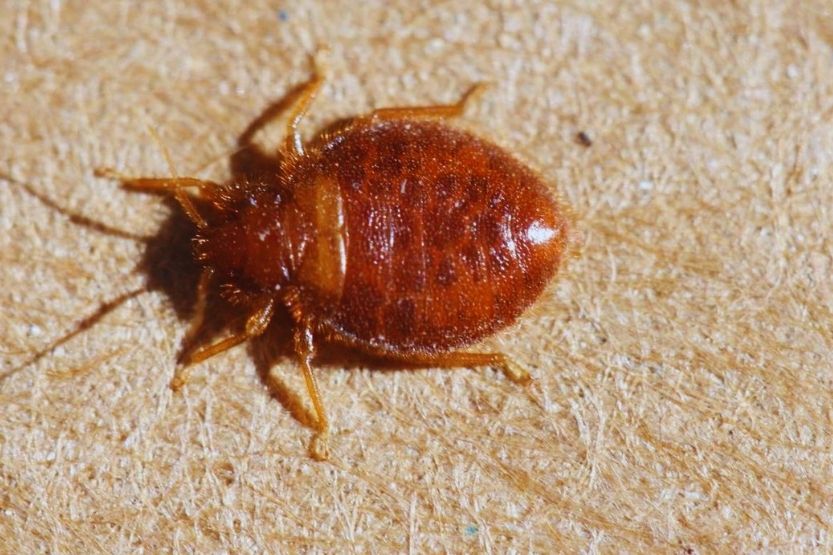
Very Similar to Bed Bugs
Bat bugs are the ones that look very similar to bed bugs. Their main difference is that bat bugs have long hairs on their heads. They have oval-shaped brown bodies just as big as apple seeds. They have wings pads, but they can’t fly.
Feed Mainly on Bat Blood
As their name suggests, these bugs feed mainly on bat blood. Bats are found in caves and other secluded forested areas. So, more than likely, these are not the bugs that you will find in your beds, chairs, and sofas.
Spider Beetles
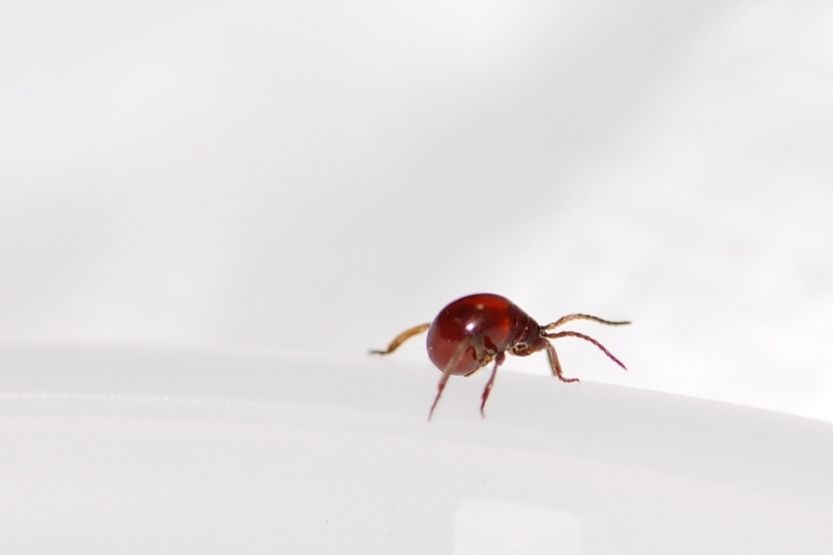
Oval Round Bodies
Spider beetles look similar to bed bugs because of their bodies that are oval round in shape. However, upon closer look, you will see where they differ from each other. The color of these tiny bugs is red-brown, almost approaching black.
Longer Legs and Antennae
They also have longer legs and antennae. Spider beetles are also covered with hairs all over their bodies. Their heads are more directly connected to their bodies. They must have necks, but they are not that noticeable. Some of their species can fly. They don’t bite as well.
Usually Found in Wooden Structures
Their main hangouts are in wooden structures where they seem to find their food. If you don’t maintain your premises that well, they can attract these bugs and infest your home. They don’t pose as many health risks as bed bugs because they don’t bite.
Booklice

Thinner Bodies
It is easier to differentiate book lice from bed bugs because their bodies are thinner and longer. They look more like termites but with long and thin antennae. The bodies of booklice are also softer than those of bed bugs. So, they are easier to kill.
Light Brown or Creamy Yellow
They have a distinct body color – light brown or creamy yellow. Unlike bed bugs, their heads are significantly segmented from their bodies. Some of them have wings that enable them to fly.
Can Cause Asthma Attacks
They can cause and exacerbate respiratory diseases, not because they bite but because their bodies turn to small particles when they die. These tiny particles, combined with dust, can be picked up by air and cause asthma attacks in those afflicted with the disease.
Usually Found in Places Where Humidity Is High
And because they are susceptible to dehydration, you can find these tiny bugs in places where humidity is high. Such places can include the following:
- Bedroom,
- Bed,
- Kitchen,
- Bathroom, and
- Other parts of your home.
Head Lice
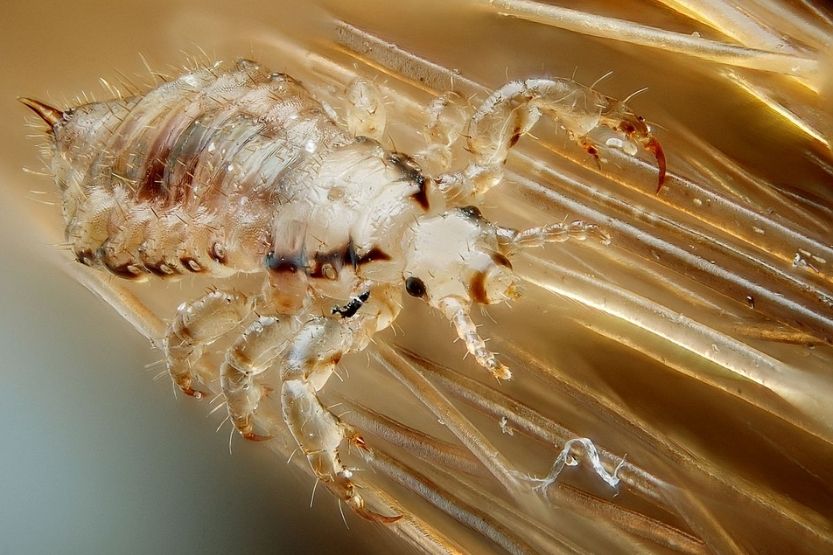
Feed Mostly on Human Blood
Mature head lice are also very small. They feed mostly on human blood. Head lice, as their name implies, infest the heads and necks of their hosts. Just like bed bugs, they move by crawling. They don’t have wings, so they can’t fly nor hop.
Multiplies Quickly
But they increase their numbers rapidly and spread from one host to another in no time. If you have seen one, that means they have already infested the head of the host. These bugs have six legs with tan or grayish color bodies. Female lice are slightly bigger than male lice.
Can Lay up to Eight Eggs per Day
Each day, they can lay up to eight eggs. Upon maturity, lice can live up to 30 days. To survive, they have to feed daily. If they can’t find a host, they can only live up to two days.
Mites
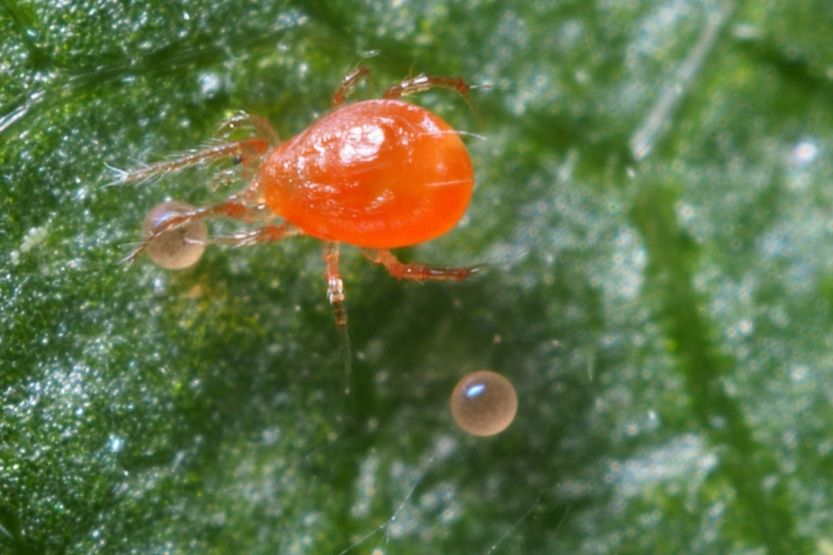
Belong to the Arthropod Family
Mites are small organisms that belong to the arthropod family. Their species are mainly related to ticks. They are mistaken for bed bugs because they almost look the same. They are also tiny, and they don’t have wings.
Most Mites Are Harmless
You will not know if you are exposed to mites until you see their bites on your skin. So, mites also feed on blood they suck from their hosts. Thankfully, most mites are harmless. However, their bites can cause skin irritation and slight skin swelling.
Unique Zigzag or Linear Shapes in Their Bodies
Distinguishing mites from bed bugs is somewhat difficult. One unique feature you should remember about them is that they have unique zigzag or linear shapes in their bodies. Their bites also vary in size, pattern, and shape.
Conclusion: Tiny Bugs in Bed [Not Bed Bugs] – What Are They?
If you see tiny bugs crawling in your bed, you will often assume that they are bed bugs. Just because you’ve found them on your bed does not mean they are bed bugs. Here are some of these tiny insects that are not bed bugs:
- Swallow bug
- Flea
- Cockroach nymph
- Carpet beetle
- Tick
- Bat bug
- Spider beetle
- Book lice
- Head lice
- Mites
Bed bugs suck blood from their hosts, and they can’t fly. Some of the bugs listed above don’t feed on blood to live, and some fly.
Read next:

